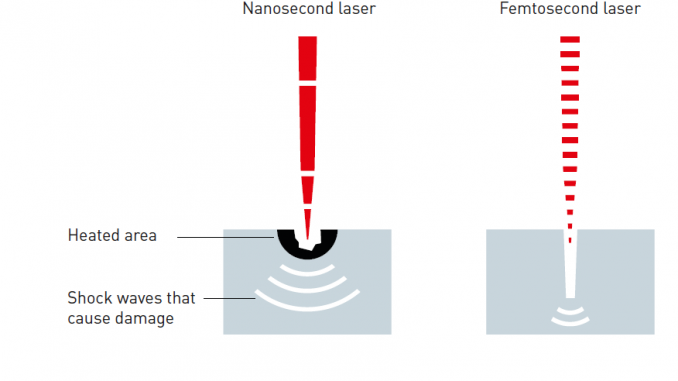The Royal Swedish Academy of Sciences has decided to award the Nobel Prize in Physics „for groundbreaking inventions in the field of laser physics“ with one half to Arthur Ashkin and the other half jointly to Gerard Mourou and Donna Strickland „for their method of generating high-intensity, ultra-short optical pulses“ (Figure 1).

Source: Nobelprize.org
At 96, Arthur Ashkin (Bell Laboratories, Holmdel, USA) is the oldest-ever Nobel laureate. His prizewinning work began immediately after the laser’s invention in 1960. Lasers exerted a gentle pressure on tiny object, which Ashkin realized, could be used to manipulate them without damaging them. His experiments with micrometre-sized spheres in the 1960s showed that the particles were drawn to the highest-intensity region in a beam of light. This led to a way to sculpt laser beams to trap, levitate and move object. Optical tweezers had been invented. A major breakthrough came in 1987, when Ashkin used the tweezers to capture living bacteria, without harming them. He even demonstrated that it was possible to reach into the cells without destroying the cell membrane. Optical tweezers are now widely used to study biological systems such as viruses and cells.
Gerard Mourou (Ecole Polytechnique, Palaiseau, France and University of Michigan, Ann Arbor, USA) and Donna Strickland (University of Waterloo, Canada) pioneered a way to produce the shortest, most-intense pulses of light ever created. Their revolutionary article was published in 1985 and was the foundation of Strickland’s doctoral thesis. They succeeded in creating ultrashort high-intensity laser pulses without destroying the amplifying material. Strickland and Mourou’s newly invented technique, called chirped pulse amplification, became a standard for subsequent high-intensity lasers (Figure 2). Ultrashort and intense laser pulses are now widely used in ophthalmic surgery, data storage and for the medical stents that are used for human blood vessels.

Sanja Dolanski Babić, PhD
Assistant Professor
Department of Physics and Biophysics
School of Medicine
University of Zagreb, Croatia
Leave a Reply